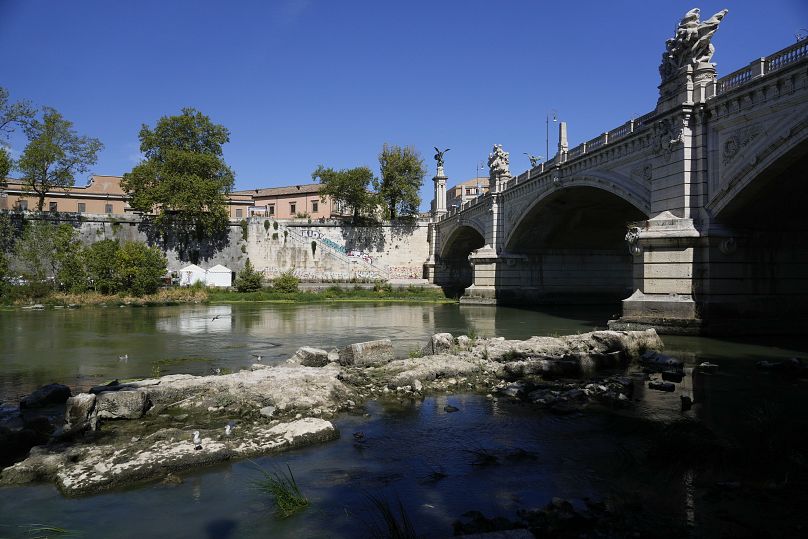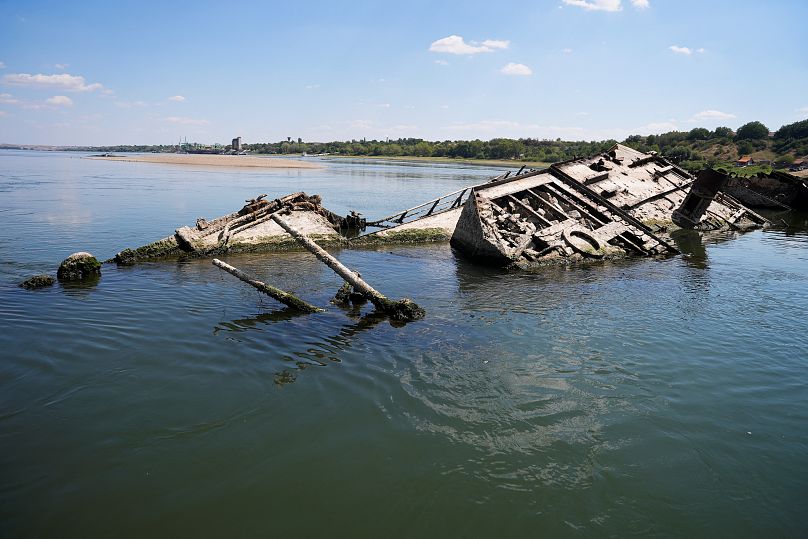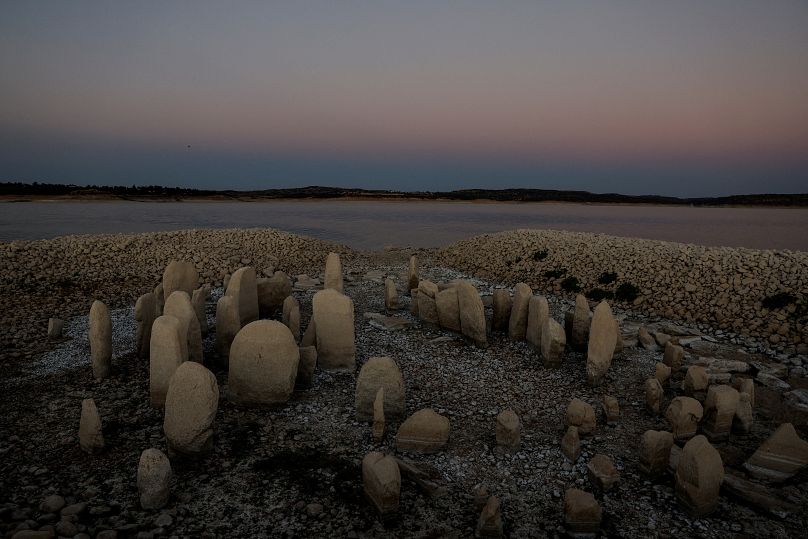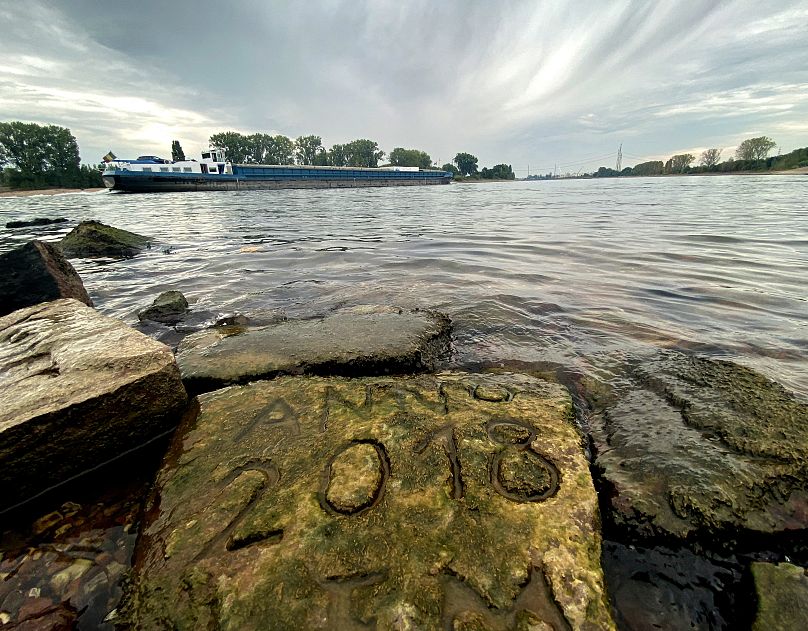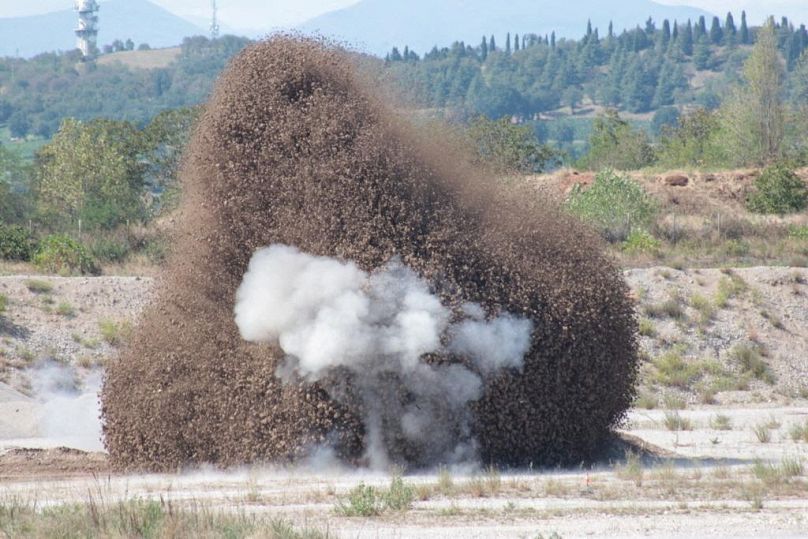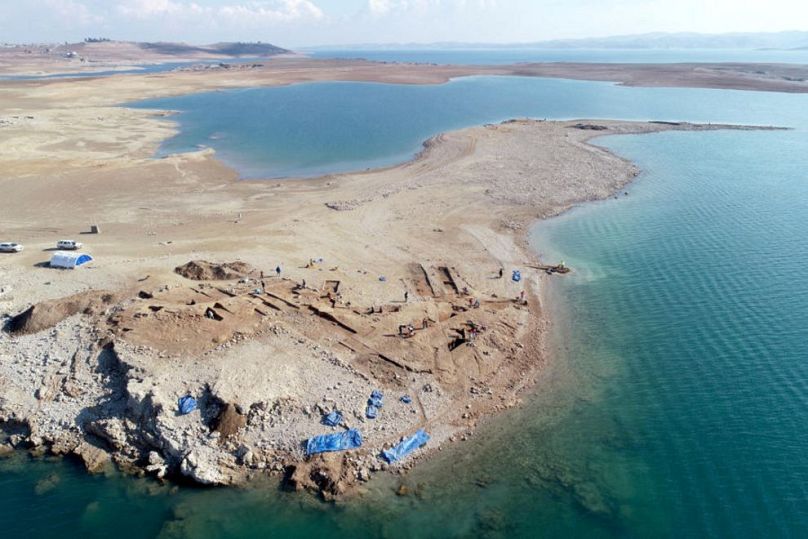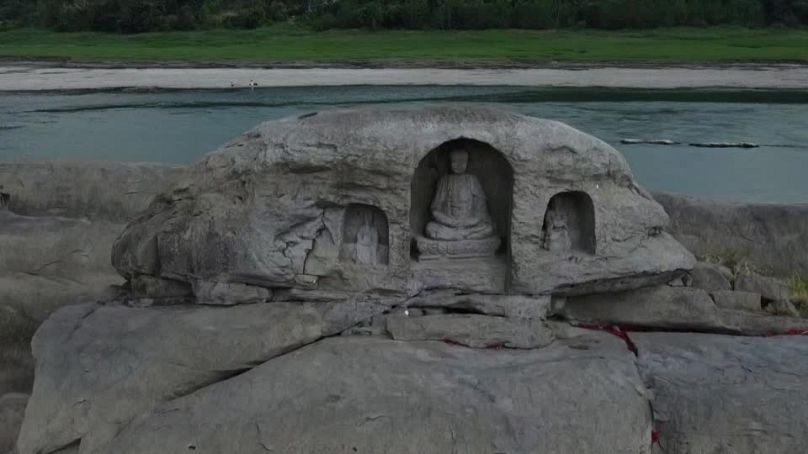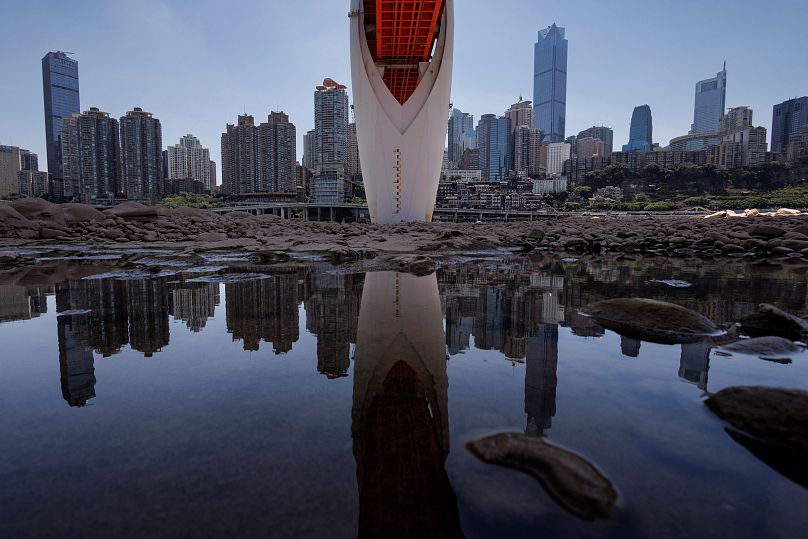Viking weapons, Nazi ships, and hunger stones: 11 eerie discoveries in dried up rivers and glaciers
Rivers across the world are drying up, exposing everything from sunken Dinosaur bones to a Spanish Stonehenge. The latest find is an abandoned Roman military camp.
As Europe experiences its worst drought in at least 500 years, new discoveries are surfacing.
Landscapes across Europe and beyond are being altered as forest fires, melting glaciers and other disasters threaten to wipe out entire regions.
As these terrains change, river beds are drying up, exposing never seen archaeological treasures.
Here are some of the most incredible finds so far.
Norway: Viking weapons
Around 800 years ago, deep in Norway’s Jotunheimen Mountain range, a Viking hunter took aim at a reindeer.
The iron-tipped arrow missed, lodging into the snow.
Eight centuries later, melting glaciers have revealed the ancient artefact - along with a crop of other old Norse weaponry.
The weapons were discovered by the Secrets of the Ice group, a team of glacial archaeologists from Oslo’s Museum of Cultural History.
"We have never unearthed an arrowhead like this before,” the team enthused on social media.
"A Viking was the last person to touch it."
Earlier this month, the team uncovered an even older arrow, dating from roughly 1500 years ago.
Spain: Ancient Roman 'ghost town'
An eerie Roman ghost village has risen from the deep, more than 2000 years after it vanished underwater.
The ancient encampment has spent centuries submerged under a reservoir on the Lima River in northwest Spain.
Experts believe it was a Roman Military camp named Aquis Querquennis, constructed in around 75AD.
The spooky ruins - revealed now by record-breaking drought - include evidence of a temple, thermal baths, hospital, and army barracks.
Italy: Ancient piers of Nero's Bridge
The Tiber river has rapidly shrunk in Italy’s worst drought in 70 years. Low water levels have revealed two of the ancient piers of Nero’s bridge. The bridge was built in the first century for Nero to reach his Janiculum Hill gardens, near what is now St Peter’s Square. The piers fell into disrepair in the third century and are usually submerged underwater.
In Italy’s driest season, one of the piers typically emerges but seeing two is rare.
“Because the water level of the river is so low now due to widespread drought across Italy, we’re able to see a lot more of the piers of the bridge than we usually could,” says historian Anthony Majanlahti.
Serbia: Nazi warships along the Danube
A fleet of Nazi warships has resurfaced along the Danube river in Serbia. The Danube is Europe’s second largest river, but this year has approached record low water levels caused by drought.
The EU and the European Investment Bank are funding an operation to remove the vessels. Experts estimate that there are roughly 40 sunken vessels in the river.
Spain: The Dolmen of Guadelperal
Dubbed ‘Spanish Stonehenge’ the Dolmen of Guadelperal has been exposed due to receding waters. The stone circle, which dates back to 5,000 BCE was submerged in 1963 due to flooding caused by one of General Franco’s rural development projects. Since then, it has only been visible four times. But with the Iberian Peninsula the driest it’s been in the past 1,200 years, more sightings could be on the horizon in the future.
Germany: Hunger stones along the Rhine
In Germany, so-called “hunger stones” have surfaced along the River Rhine. These kinds of rocks are traditionally found in Central Europe, with engravings to commemorate famine and other hardships. Dates visible on the most recently discovered stones include 1947, 1959, 2003 and 2018. They are said to act as low level water warnings to future generations.
Italy: A WWII bomb in the Po
As the waters of Po shrank amid devastating drought, Italy discovered an unexploded World War II bomb. Experts in the Italian Army detonated the find securely. In other areas, the water level dropped so low that the ruined walls of a medieval town emerged.
Iraq: Mitanni Empire's lost city
In Iraq, an entire city from the Bronze Age has been discovered in Mosul Dam. The Kemune archaeological site dates back around 3,400 years and was once an important city in the Mitanni Empire. The discovery took place as a result of the draining of Mosul Dam’s reservoir, in an effort to save dying crops. Iraq is one of the world’s most vulnerable countries to the effects of climate change.
China: Island discovery in the Yangtze
China has been making discoveries in dried-up rivers too as the country faces a 70-day heatwave and ongoing drought. With water levels of Yangtze plummeting, an entire island has emerged, with three ancient statues.
China's largest freshwater lake, Poyang lake, has also reached levels usually seen in the low season at the earliest date since records began in 1951. On 19 August, it was measured at just 9.87 metres.
Satellite images released by earth imaging company Planet Labs PBC show how a previously lush, green section near the village of Zhupaoshan has dried to shades of brown.
Meanwhile, as the Jialing River approaches record low water levels, the Qiansimen Bridge stands tall over a dry river bed.
UK: Crystal Palace dinosaur sculptures
In Crystal Palace in the UK, park visitors came across newly exposed sculptures of dinosaurs in its lake. Crystal Palace Dinos, an organisation that protects these sculptures, said on Twitter that both a lack of rain and a failure to dredge regularly were to blame.
USA: Dinosaur tracks in Texas
Across the Atlantic, dinosaurs also made their mark this year. In Texas, drought has dried the Paluxey River, revealing impressive dinosaur tracks that have been hidden for 113-million years.
Elsewhere, in Las Vegas, gruesome mafia secrets are being exposed in Lake Mead. As extreme temperatures reduce the lake to just 27 per cent capacity, the remains of at least three people have been found - including one of a man with a bullet hole in his head.
Watch the video above to learn more about the sunken ships of the Danube.











